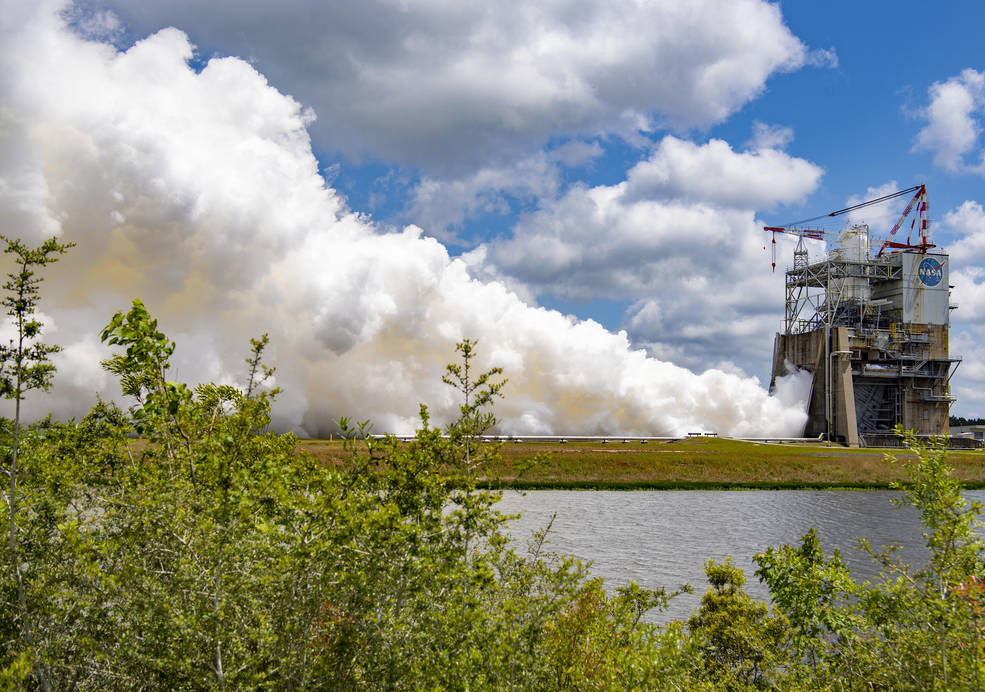1.05.2023


NASA carried out a critical hot fire of the redesigned RS-25 engine April 26 at NASA’s Stennis Space Center in Bay St. Louis, Mississippi, demonstrating the gimbaling, or pivoting, capabilities needed to stabilize a rocket during a launch and flight to space.
Operators at the nation’s largest propulsion test site conducted the first gimbal test of the current RS-25 engine certification series on the Fred Haise Test Stand. The certification series is supporting lead engine contractor Aerojet Rocketdyne as it prepares to produce additional RS-25 engines for future SLS (Space Launch System) flights.
The new production includes engines for future Artemis missions to the Moon, as NASA returns humans to the lunar surface to establish a long-term presence for scientific discovery and to prepare for human missions to Mars.
During a 12-minute (720 seconds) hot fire, operators gimbaled the RS-25 engine using a NASA Stennis-developed system to enable pivoting of the engine, mirroring maneuvers needed during launch and flight of the SLS rocket. The 720-second hot fire marks the longest-duration test of an RS-25 certification engine in the current test series.
Gimbaling is the technique of pivoting, or swiveling, the engine a few degrees along a tight circular or back-and-forth axis to direct engine thrust and “steer” the rocket on a proper trajectory. It also plays a vital role to ensure the rocket maintains stability during flight to space. Four RS-25 engines, firing simultaneously, help power each SLS launch, producing more than 2 million pounds of combined thrust during the eight-minute flight to orbit.
The test team at NASA Stennis performed multiple gimbaling maneuvers during the test, pushing the capability to its limits to provide a margin of operational safety. For much of the April 26 test, the engine fired at the 111% power level, the level of thrust needed during launch. Operators briefly pushed the engine up to the 113% power level as well.
NASA and Aerojet Rocketdyne modified 16 engines remaining from the Space Shuttle program, which were proven flightworthy at NASA Stennis for Artemis missions I through IV. The current series of testing supports production of new RS-25 engines to help the Artemis V mission and beyond.
Under Artemis, NASA will land the first woman and first person of color on the Moon, establish long-term lunar science and exploration capabilities, and inspire the next generation of explorers – the Artemis Generation.
Quelle: NASA

